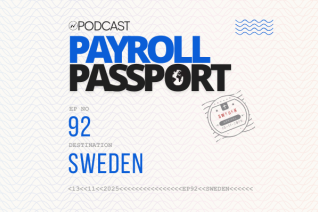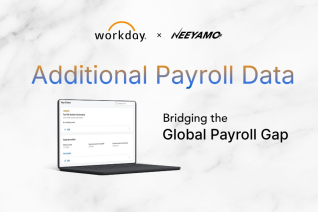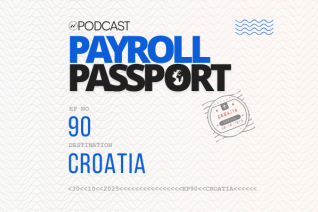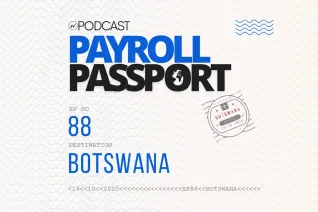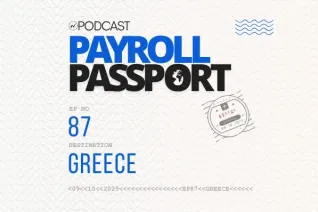How to Create an Effective Global Payroll RFP

As organizations expand across borders, payroll quickly becomes one of the most complex and high-stakes global processes to manage. Regulations shift from country to country, employees expect consistent accuracy, and leaders demand insights that drive better workforce decisions. Choosing the right global payroll partner is no longer just a procurement exercise, it’s a strategic move that shapes how smoothly a company can scale worldwide.
This is where a well-crafted global payroll RFP (Request for Proposal) becomes essential. A global RFP gives you a structured way to compare vendors, assess capabilities, and understand how each provider will support your compliance, technology, and service needs across markets. But creating one that is truly effective requires clarity, depth, and a strong understanding of your organization’s global payroll realities.
A great RFP does three things: gives vendors the context they need, asks targeted questions that reveal capability (not marketing), and builds an objective scoring process so you can compare apples to apples. Below I walk you through preparation, the RFP structure, sample questions, evaluation criteria, and a ready checklist to run the process. Sources and vendor templates are linked throughout.
But first, what is a Global RFP?
A Global RFP (Request for Proposal) is a formal document used by organizations to solicit detailed proposals from vendors for services or solutions that must be delivered across multiple countries. It outlines the company’s global requirements, scope, compliance needs, timelines, and evaluation criteria so that vendors can submit comparable, structured responses.
Why an RFP matters (and what it should achieve)
When you’re choosing a global payroll provider you’re buying more than software you’re buying compliance, people, country coverage, integrations and long-term partnership. A well-crafted RFP helps vendors tailor proposals to your reality and, crucially, provides the inputs your evaluation team needs to make a defensible decision. If you skip context or leave evaluation criteria vague, you’ll get polished slide decks rather than actionable proposals.
1. Start by Defining Your Global Payroll Context
Every strong RFP begins with an honest look inward. Before asking vendors what they can do, outline where you are today. Companies that succeed with their RFPs typically articulate their current payroll footprint, their biggest operational challenges, and how they manage compliance across jurisdictions. This clarity allows vendors to respond with solutions tailored to your environment rather than broad, generic promises.
At this stage, it also helps to map out your internal HR and payroll ecosystem: the systems you use, the integrations you rely on, and the touchpoints between payroll and other business functions. Vendors can only design an effective implementation plan if they understand the architecture they’ll be joining.
2. Clarify the Scope of What You Want to Outsource
Global payroll doesn’t look the same for every organization, and a vague scope is one of the fastest paths to a disappointing RFP outcome. Be explicit about the countries in scope, the number of employees per location, the shared services model you operate, and the level of payroll support you expect. This is also the time to call out any country-specific compliance obligations, unique compensation structures, unionized workforces, or benefits that require careful handling.
By painting a clear picture, you make it easier for vendors to propose solutions that account for scale, complexity, and local nuances.
3. Describe the Experience You Expect — Not Just the Outputs
Many RFPs focus narrowly on tasks and deliverables, but what truly differentiates global payroll providers today is the quality of the end-to-end experience. Instead of only listing processing requirements, describe the type of service journey you want for your HR teams and employees. Consider the level of automation you expect, how exceptions should be managed, the responsiveness you need from a support team, and whether real-time visibility into payroll data is non-negotiable.
Leading organizations increasingly use the RFP stage to evaluate a provider’s ability to create a seamless, tech-enabled experience rather than simply execute pay cycles.
4. Detail Your Integration and Technology Expectations
A global RFP is incomplete without clarity on how payroll should integrate into your broader digital landscape. Whether you use a global HCM system, a time-tracking platform, or local country applications, outline the interfaces that must work together. Modern payroll relies heavily on automation, and the more you specify your expectations for data flows, validations, and audit trails, the more likely vendors can demonstrate their true technical strengths.
This is also the place to convey your vision for analytics, dashboards, and insights. Today’s global payroll operations thrive on real-time reporting, predictive capabilities, and unified global visibility and your RFP should reflect that ambition.
5. Explain How You Will Evaluate Vendors
The global payroll market is crowded, and each provider positions itself differently. A clear evaluation framework allows vendors to understand what matters most to you. Some companies prioritize compliance expertise, while others focus on technology, scalability, or employee experience. Use your RFP to outline how you will assess proposals, how demonstrations will be scored, and what criteria influence final selection.
Being transparent about your evaluation process encourages vendors to respond with depth and precision not volume.
6. Request Real-World Proof of Capability
Even though not all providers can offer customer testimonials in emerging service areas, it’s reasonable to ask for case studies, reference architectures, or examples of how they’ve handled challenges similar to yours. This contextual evidence brings vendor claims to life and shows you how their solutions perform in practice.
Where possible, ask vendors to walk you through real implementation journeys including what went well and what didn’t. The best partners are candid and willing to discuss lessons learned.
7. Bring Internal Stakeholders Into the Process Early
An RFP fails when it reflects the needs of only one department. Global payroll touches HR, finance, compliance, IT, and leadership teams, so internal alignment is essential. Before finalizing the RFP, gather inputs from country HR teams, payroll administrators, and any teams responsible for data or system integrations. Their on-the-ground insights are crucial for shaping a realistic and comprehensive document.
When these stakeholders feel heard early in the process, the eventual transition to a new provider becomes much smoother.
8. Set Clear Timelines and Communication Expectations
Global payroll transitions are complex, and vendors need to understand your timeline pressures. Clearly state your expected go-live dates, your internal budget cycle, and any critical compliance deadlines. Equally important is defining how you expect vendors to communicate during the RFP process including who receives questions, how responses will be submitted, and what format vendors should follow.
A structured RFP process not only helps vendors respond effectively but also signals professionalism and preparedness on your end.
9. Treat the RFP as a Strategic Blueprint, Not a Checklist
The best global payroll RFPs don’t just gather information, they shape the foundation of a long-term partnership. When thoughtfully crafted, the RFP becomes a blueprint for how payroll will function across your global organization for years to come. It helps you align internal teams, sets expectations early, and ensures potential partners understand both the complexity and the ambition behind your global payroll vision.
A successful RFP is therefore not just about selecting a vendor. It’s about choosing the partner who will help you build a compliant, scalable, and future-ready payroll operation worldwide. Reach out to us at irene.jones@neeyamo.com to know more!
Latest Resources
Stay informed with latest updates
If you're curious and have a thirst for knowledge pertaining to the HR, payroll, and EOR universe, don't miss out on subscribing to our resources.




